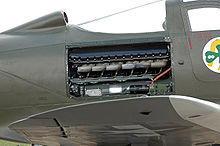Mid-engine
Mid-engine is the designation for the engine arrangement in vehicles between the axles, in the narrower sense an engine - gearbox unit with the engine in front of the driven rear axle. In older sources, however, the designation rear engine can be found for this design. In multi-lane motor vehicles, the arrangement behind or below the occupants is a further feature of the mid-engine design. In a broader sense, underfloor motors arranged between the axles also count as mid-mounted motors. The engine arrangement differs from the front engine and rear engine arrangement , although the demarcation to the front engine is soft: With front-wheel drive in the reverse arrangement (gearbox in front, engine behind), the engine is located between the axles, but is still considered a front engine.
In sports cars with an engine located behind the front axle in front of the passenger compartment and a driven rear axle, the arrangement is also referred to as “front mid-engine” because the “between the axles” feature is met, but not the “behind the occupants” feature . This design was the predominant design between 1900 and 1930, when this name did not yet exist. With the advent of the front independent suspension, the engines moved further forward.
The mid-engine arrangement is mainly used in sports and racing cars , but occasionally also in vans , buses and trucks . There is also the connection of the mid-engine with all-wheel drive , which, however, requires a complex drive train around the engine.
For bicycles with an electric drive , such as pedelecs , a central motor on the bottom bracket is the alternative to the wheel hub motor .
history
In Gottlieb Daimler's motorized carriage from 1886, the engine was installed under and in the rear footwell, but the engine is also found between the axles in other early cars, for example under the driver's seat in the first vehicles from Ford , Packard or Olds . The drive power of the transversely installed engines was transmitted to the rear wheels by chains. A similar construction was the Hanomag 2/10 PS from 1925 with the engine behind the seat and a drive chain. A mid- range vehicle with an engine installed longitudinally in front of the rear axle was Rumpler's teardrop car from 1921. The Auto Union 16-cylinder type A racing car , which was developed in 1933 with the assistance of Ferdinand Porsche , had a mid-engine, just like the Mercedes-Benz 150 . The British racing car manufacturer Cooper started building sports prototypes and Formula 2 cars with mid-engined engines from 1955 ; all cars in the Formula 1 racing series have been designed in this way since the early 1960s. In the World Rally Championship, at the time of Group B, thoroughbred racing cars with a mid-engine were also allowed, which were used by the works teams of Lancia, Peugeot, Austin Rover (MG), Ford, Renault and Citroen.
In bus construction, underfloor mid-mounted engines were temporarily used in addition to the front-mounted engines that had been used for a long time, before the rear-mounted engine became the standard. The manufacturer Büssing , taken over by MAN in 1971, was known for its trucks with underfloor engines.
The mid-engine is rare in passenger cars with the exception of sports cars; it was common in scooter vehicles in the 1950s. The planned successor to the Beetle VW EA 266 , a compact car with a mid-engine, remained a prototype.
Advantages and disadvantages
The mid-engine facilitates an almost even weight distribution between the front and rear axles and achieves a low mass moment of inertia around the vehicle's vertical axis , since the masses are concentrated around the vehicle's center of gravity . This results in a balanced driving behavior that is characterized neither by understeer ( slip angle of the tires at the front greater than at the rear) nor by oversteer (slip angle at the rear greater than at the front). This enables high cornering speeds.
Because of the low moment of inertia, exceeding the grip limit in a curve leads to a very fast, difficult-to-control turn of the mid-engine vehicle. On the other hand, turning into a curve is easy, the vehicle looks agile. In addition, rotational movements around the transverse axis / pitch axis (e.g. braking and starting pitching) can occur more pronounced due to the lower inertia and have a negative impact on driving comfort and dynamic axle load distribution. The practical utility of mid-engine automobiles is usually limited. They often only have a single row of seats, sometimes there are two luggage compartments in the rear and front. Depending on the type of vehicle, the engine and ancillary units are sometimes difficult to reach during repairs, which makes maintenance difficult.
Since the outer bow and stern areas of mid-engine vehicles are not used by the drive unit, the crumple zones can be designed freely. This increases the passive safety of the occupants.
Selection of mid-engine vehicles
Use in aircraft
Mid-engines were also used in aviation, e.g. B. the Bell P-39 Airacobra and the Bell P-63 Kingcobra . In these fighter aircraft, the maneuverability should be increased by placing the engine in the middle of the aircraft. In addition, more armament could be accommodated in the nose of the fuselage or the aircraft could be equipped with a retractable nose wheel, which gave the pilot a much better view forwards when rolling on the ground than with a conventional tail wheel. Ultimately, however, the construction principle could not prevail.
The Dornier Do 335 was an unconventional twin-engine aircraft, with a front engine for the pull propeller at the bow and a mid-engine for the pusher propeller at the stern.
literature
- Hans-Hermann Braess, Ulrich Seiffert: Vieweg manual automotive technology. 2nd edition, Friedrich Vieweg & Sohn Verlagsgesellschaft mbH, Braunschweig / Wiesbaden, 2001, ISBN 3-528-13114-4



